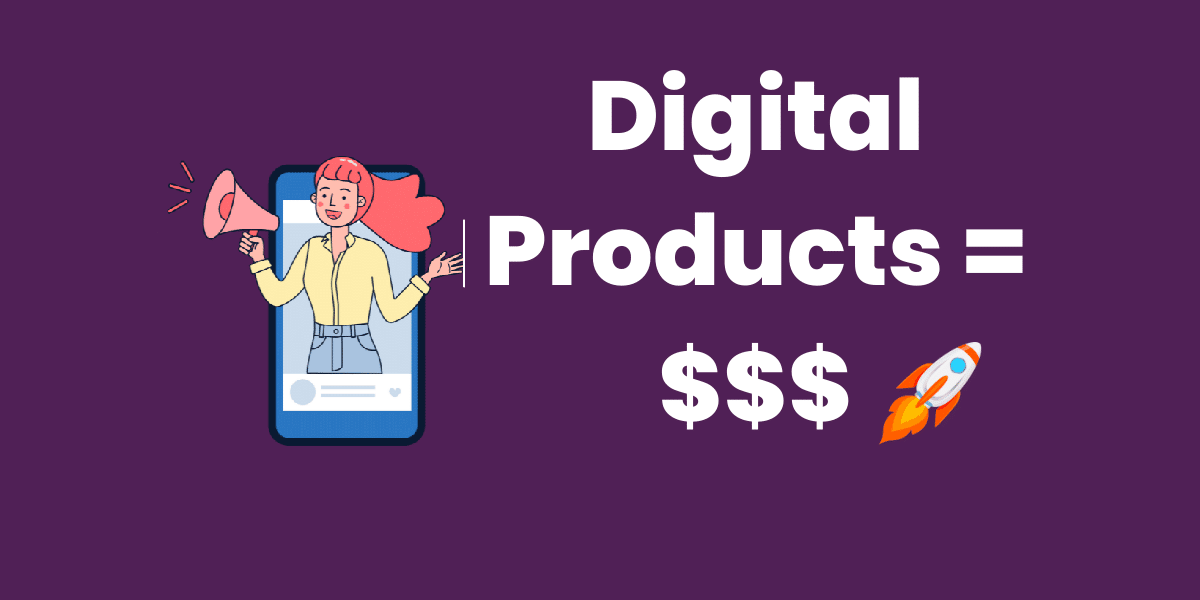In today’s digital era, selling digital products is one of the best ways to generate passive income. Unlike physical products, digital products don’t require inventory or shipping, making them highly profitable. If you are looking to start an online business, here is a step-by-step guide on how to create and sell digital products effectively.
Step 1: Choose the Right Digital Product to Sell
Before creating a digital product, identify a niche that aligns with your expertise and interests. Here are some popular digital products:
- E-books & Guides – Educational or how-to guides on various topics.
- Online Courses & Tutorials – Video or text-based lessons on skills like coding, marketing, or design.
- Templates & Printables – Resume templates, business card designs, or planners.
- Stock Photos & Videos – High-quality images and footage for content creators.
- Audio & Music Files – Royalty-free music, sound effects, or meditation tracks.
- Software & Apps – SaaS products, website themes, or plugins.
- Digital Art & Graphics – Logos, illustrations, and design assets.
Step 2: Research Market Demand
To ensure profitability, research market demand before creating a product. Here’s how:
- Analyze Competitors – Look at existing digital products on platforms like Etsy, Gumroad, and Udemy.
- Check Search Trends – Use tools like Google Trends and AnswerThePublic to identify popular topics.
- Join Online Communities – Participate in forums and social media groups to understand customer needs.
- Ask Your Audience – Conduct surveys or polls to gather insights from potential buyers.
Step 3: Create High-Quality Digital Products
Once you’ve selected a product, focus on high-quality creation. Follow these tips:
- Use the Right Tools:
- Canva, Photoshop, or Illustrator for design-related products.
- Microsoft Word or Scrivener for e-books.
- Adobe Premiere Pro or Final Cut Pro for video content.
- Audacity or GarageBand for audio products.
- Ensure Value and Uniqueness – Provide solutions to real problems and offer unique content.
- Focus on User Experience – Make products easy to use, read, or download.
Step 4: Choose a Selling Platform
Select the right platform to sell your digital products. Here are some options:
- Etsy – Great for selling printables, templates, and digital art.
- Gumroad – Ideal for e-books, courses, and software.
- Sellfy – A beginner-friendly platform with built-in store features.
- Teachable & Udemy – Best for selling online courses.
- Shopify & WooCommerce – Suitable for creating your own website and selling directly.
- Amazon Kindle Direct Publishing (KDP) – Ideal for e-book authors.
Step 5: Set Up Your Online Store
To establish a strong digital presence, follow these steps:
- Create a Website – Use platforms like WordPress, Shopify, or Wix.
- Optimize for SEO – Use relevant keywords to rank higher on search engines.
- Enable Secure Payment Methods – Integrate PayPal, Stripe, or other payment gateways.
- Offer Multiple File Formats – Provide options like PDF, PNG, MP3, or ZIP files for convenience.
Step 6: Price Your Digital Product Smartly
Pricing plays a crucial role in sales. Here’s how to set the right price:
- Research Competitor Pricing – Compare similar products on different platforms.
- Consider Value and Uniqueness – If your product offers extra features, charge a premium.
- Use Tiered Pricing – Offer basic, standard, and premium versions.
- Provide Discounts & Bundles – Attract customers with limited-time offers and package deals.
Step 7: Market and Promote Your Digital Product
Effective marketing is key to driving sales. Utilize these strategies:
- Leverage Social Media – Promote on Instagram, Facebook, Twitter, and Pinterest.
- Use Email Marketing – Build an email list and send promotional offers.
- Start a Blog – Write content related to your digital product and use SEO to drive traffic.
- Collaborate with Influencers – Partner with niche influencers to reach a broader audience.
- Run Paid Ads – Use Facebook Ads, Google Ads, or Pinterest Ads to boost visibility.
- Offer Freebies – Give away a free sample or mini-version to attract buyers.
Step 8: Automate Sales for Passive Income
To maximize passive income, automate your sales process:
- Set Up Automated Email Funnels – Send automated emails using ConvertKit or Mailchimp.
- Use Affiliate Marketing – Allow influencers to promote your product for a commission.
- Create Evergreen Content – Publish blog posts, YouTube videos, or social media content that continuously drive traffic.
- Utilize AI Chatbots – Implement chatbots on your website for instant customer support.
Step 9: Maintain and Update Your Products
To ensure long-term success, periodically update your digital products:
- Improve Based on Feedback – Monitor customer reviews and improve accordingly.
- Add New Features – Enhance existing products to stay competitive.
- Repackage & Resell – Bundle products together for new offers.
Conclusion
Selling digital products is a great way to generate passive income with minimal overhead costs. By following these steps—choosing the right product, creating high-quality content, selecting a selling platform, pricing smartly, marketing effectively, and automating sales—you can build a sustainable online business. Start today and turn your expertise into a profitable digital product!


